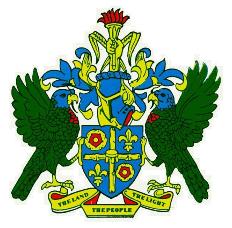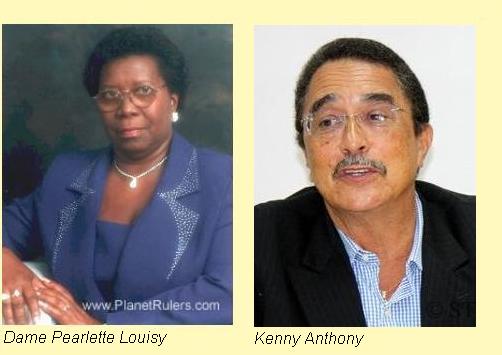

SAINT LUCIA
• Official name: Saint Lucia (usually written as St Lucia)
• Location: Caribbean
• International organisations: African, Caribbean and Pacific Group of States, Commonwealth of
Nations, Non-Aligned Movement, Organisation of American States, United Nations, World Trade
Organisation
• Borders: None
• Coastline: Caribbean Sea
• Land area: 616 Km2
• Population: 170,000
• Annual GDP (PPP) per capita: US$10,900 (2009 CIA estimate). World ranking: 77
• Ethnicity: More than 90% of the population are of African descent. There are small
European and Indian minorities.
• Languages: English is the official language and is generally understood. Most of the
population speak a French creole.
• Religion: Over 90% of the population are Catholic Christians.
• Form of government: Constitutional monarchy and parliamentary democracy. St Lucia is
divided into eleven districts.
• Capital: Castries
• Constitution: The
Constitution of St Lucia came into effect on 22 February 1979.
• Head of state: Queen Elizabeth II, Queen of St Lucia. The Queen came to the British
throne on 6 February 1952, and has held the title Queen of St Lucia since 22 February 1979.
The Queen's functions in St Kitts and Nevis are excercised by a Governor-General, appointed by the
Queen on the advice of the Prime Minister. The current Governor-General,
Dame Pearlette Louisy, took office on 17 September 1997.
• Head of government: The Prime Minister, appointed by the Governor-General. The Prime Minister is the
leader of the largest party in the legislature and is accountable to it.
• Legislature: St Lucia has a bicameral legislature, the
Parliament. The House of Assembly has 17 members,
elected by popular vote from single-member constituencies for a five-year term. The Senate has 11 seats, six
appointed on the advice of the prime minister, three on the advice of the leader of the opposition, and two after consultation with religious,
economic, and social groups
• Electoral authority: The St Lucia Electoral Department
administers elections.
• Freedom House 2009 rating: Political Rights 1, Civil Liberties 1

Political history
St Lucia was probably sighted by Columbus, but it is not clear if he landed on the island.
It was rediscovered by French navigators in about 1502, and was claimed by France in 1650. During
the 18th century it changed hands between France and Britain many times, before finally being captured
by the British in 1803. In 1838 the island became part of the British colony of the Windward Islands.
A legislature was introduced in 1924, and universal franchise in 1951. In 1958 St Lucia became part
of the Federation of the West Indies, and acquired inernal self-government. When the federation broke
up, St Lucia became an independent colony, and an Associated State with full local self-government in
1967. Full independence followed in 1979.
St Lucia politics were dominated for many years by the United Workers Party, which despite
its name is a conservative party. UWP leader John Compton was Prime Minister from 1964 to 1979, and
again from 1982 to 1996. Following his retirement, however, the St Lucia Labour Party, a
social democratic party, came to power under Kenny Anthony,
who won the 2001 election with a large majority. Compton then returned to the UWP leadership and, at the age of 81,
regained power at the 2006 election. Compton died in September 2007 and was succeeded as UWP leader and Prime Minister by
Stephenson King. King, however, was unable to maintain Compton's popularity and Labour returned to power under Anthony at
elections in November 2011.
Updated January 2012
|

